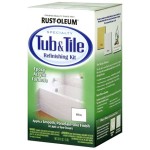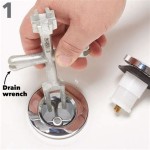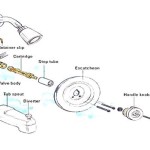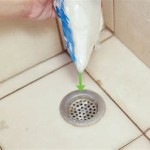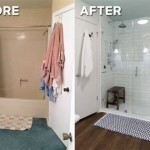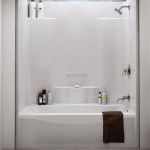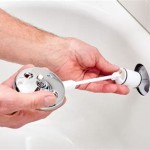Understanding the Trip Lever Bathtub Drain
The trip lever bathtub drain is a common and widely utilized mechanism for controlling the flow of water in a bathtub. Its simplicity and relatively low cost make it a popular choice in many residential and commercial settings. This article will explore the components, functionality, common issues, troubleshooting techniques, and maintenance strategies associated with the trip lever bathtub drain system.
The primary function of a bathtub drain is to provide a means of quickly and reliably sealing and unsealing the drain opening. This allows the user to fill the tub for bathing and subsequently drain the water after use. The trip lever mechanism offers a mechanical advantage, enabling users to operate the drain stopper without directly reaching into the water.
Key Components of a Trip Lever Drain
A typical trip lever bathtub drain is comprised of several key components, each playing a crucial role in its overall function. Understanding these components is essential for effective troubleshooting and repair.
Trip Lever: This is the handle located on the overflow plate, usually situated directly below the bathtub faucet. It is the user's primary interface for operating the drain. Moving the lever up and down actuates the drain stopper mechanism.
Overflow Plate: The overflow plate is the decorative metal plate that houses the trip lever. It also serves as a secondary drain point to prevent the bathtub from overflowing if the primary drain is blocked.
Connecting Linkage: This is a metal rod or series of rods that connect the trip lever to the drain stopper. The linkage translates the motion of the lever into vertical movement of the stopper.
Drain Stopper (Plunger): Located within the drainpipe, the drain stopper is a cylindrical piece, often made of metal or plastic, designed to seal the drain opening. Its vertical movement, controlled by the linkage, allows it to be positioned to either block or unblock the flow of water.
Drain Flange: The drain flange is the metal fitting that sits flush with the bottom of the bathtub. It has a strainer or grid pattern that prevents large objects from entering the drainpipe and causing clogs.
Drainpipe and Waste Shoe: These are the plumbing components that carry water away from the bathtub drain. The waste shoe is a curved section of pipe that connects the drain flange to the main drainpipe.
Functionality and Operation
The operation of a trip lever drain relies on a simple mechanical principle. When the trip lever is moved to the "up" position, the connecting linkage pulls the drain stopper upwards, creating an opening that allows water to flow out of the bathtub.
Conversely, when the trip lever is moved to the "down" position, the connecting linkage pushes the drain stopper downwards, sealing the drain opening and preventing water from escaping. The effectiveness of the seal is dependent on the condition of the stopper and the precision of the linkage adjustment.
The overflow drain, located behind the overflow plate, serves as a backup system. If the drain stopper is closed and the water level in the tub rises above a certain point, the excess water will flow into the overflow drain, preventing the bathtub from overflowing onto the floor.
The entire system is designed to be relatively simple and reliable. However, over time, wear and tear, corrosion, and the accumulation of debris can lead to various problems that affect its functionality.
Common Problems and Troubleshooting
Several common problems can arise with trip lever bathtub drains, impacting their ability to effectively seal or drain the tub. Identifying the specific issue is the first step towards implementing an appropriate solution.
Drain Stopper Not Sealing Properly: This is a frequently encountered problem. If the drain stopper does not create a tight seal, water will slowly drain out of the tub, even when the lever is in the "down" position. Possible causes include a misaligned stopper, a worn or damaged stopper, or debris obstructing the sealing surface.
Drain Stopper Not Lifting Properly: Conversely, the stopper may not lift high enough when the lever is in the "up" position, restricting the flow of water. This can be caused by a misadjusted linkage, corrosion or binding in the linkage, or a damaged stopper mechanism.
Sticking or Difficult Lever Operation: If the trip lever is difficult to move or feels sticky, it could be due to a build-up of mineral deposits or soap scum around the lever and linkage. Corrosion within the linkage mechanism can also contribute to this issue.
Leakage Around Overflow Plate: Water leaking around the overflow plate indicates a loose or damaged gasket, or a corroded connection between the overflow plate and the drainpipe. Tightening the screws holding the overflow plate in place may resolve the issue, but a replacement gasket might be necessary.
Clogged Drain: While not directly related to the trip lever mechanism itself, a clogged drain is a common problem associated with bathtubs. Hair, soap scum, and other debris can accumulate in the drainpipe, restricting or blocking the flow of water. This can manifest as slow draining or a completely blocked drain.
Troubleshooting Techniques: Addressing these common problems requires a systematic approach. First, visually inspect the trip lever, overflow plate, and surrounding area for any signs of damage or corrosion. Next, operate the trip lever to observe the movement of the drain stopper and linkage. If the stopper is not sealing properly, try adjusting the linkage by loosening the adjustment screw (typically located near the top of the overflow plate) and repositioning the linkage. If the lever is sticking, try lubricating the mechanism with a silicone-based lubricant. For a clogged drain, use a drain snake or plunger to remove the blockage.
Maintenance Strategies
Regular maintenance is crucial for prolonging the life of a trip lever bathtub drain and preventing common problems. Simple preventative measures can save time and money in the long run.
Regular Cleaning: Periodically clean the drain flange and the surrounding area to remove hair, soap scum, and other debris. A small brush or a specialized drain cleaning tool can be helpful for reaching into the drain opening. Pouring boiling water down the drain can also help to dissolve soap scum and loosen minor blockages. Avoid harsh chemical drain cleaners, as they can damage the plumbing and the drain components.
Lubrication: Lubricate the trip lever and the connecting linkage regularly with a silicone-based lubricant. This will help to prevent sticking and corrosion, ensuring smooth operation.
Inspection: Periodically inspect the overflow plate, drain flange, and surrounding area for any signs of leaks or corrosion. Address any issues promptly to prevent further damage.
Hair Catcher: Consider using a hair catcher or strainer in the drain to prevent hair from entering the drainpipe. These devices are inexpensive and easy to install, and they can significantly reduce the risk of drain clogs.
Proper Usage: Avoid flushing large objects or excessive amounts of soap down the drain. This can contribute to drain clogs and damage to the drain components.
By implementing these maintenance strategies, homeowners can ensure that their trip lever bathtub drain continues to function properly for years to come. While repairs may occasionally be necessary, proactive maintenance can significantly reduce the frequency and severity of such issues.
In situations where the problem persists despite these measures, or if the drain is severely damaged or corroded, it may be necessary to replace the entire trip lever drain mechanism. This typically involves removing the old drain components and installing a new drain assembly. While this task can be performed by a homeowner with some plumbing experience, it is often best left to a qualified plumber to ensure a proper and leak-free installation.

Everbilt Trip Lever 1 2 In White Poly Pipe Bath Waste And Overflow Drain Brushed Nickel Sh 7100 P 01 05 5 The Home Depot

Drain Overflow Assemblies Fine Homebuilding

Trip Lever Bath Drain 1560 Series Best Plumbing Specialties

Drain Overflow Assemblies Fine Homebuilding

Bathtub Drain Trim Kits And Parts In Decorative Finishes

Easy Fixes For A Sticky Trip Lever Bathtub Drain Stopper

Bath Tub Trip Lever Stopper Replacement Or Adjustnment

Danco Trip Lever Bath Tub Drain And Overflow Trim Kit In Brushed Nickel 89242 The Home Depot

Trip Lever Bathtub Drain Assembly Stopper Kit In Oil Rubbed Broe Color Fit For 1 2 5 8 Strainer Com

Free S H Chrome Bathtub Tub Drain Overflow Trip Lever Face Plate With 2
Related Posts

